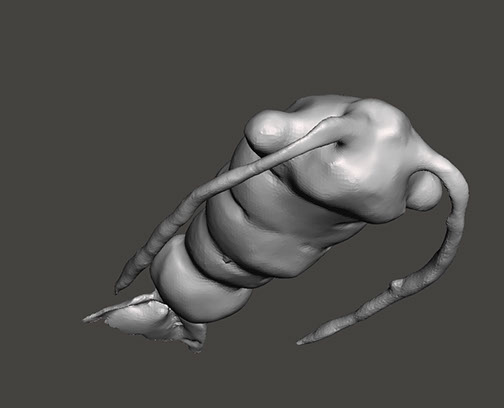Species: Copepod
Student: Bridget Whited
Information:
Believe it or not, plankton are the center of our living, human world. Plankton are a diverse group of organisms that live in large bodies of both fresh and salt water and are unable to swim against a current. They provide a crucial source of food to many large aquatic organisms, such as fish and whales. These organisms include many subgroups. The two main subgroups are: Phytoplankton and Zooplankton.
Phytoplankton are autotrophic or self-feeding. Phytoplankton obtain energy through the process of photosynthesis and must therefore live in the well-lit surface layer of an ocean, sea, lake, or other body of water. Phytoplankton account for about half of all photosynthetic activity on Earth. Photosynthesis is a process in which organisms use sunlight to synthesize foods from carbon dioxide and water. These Phytoplankton then go on to become food for different animals within the aquatic kingdom such as zooplankton.
Zooplankton are different from phytoplankton in the sense that they get most of their energy from eating phytoplankton. Like stated above, plankton are comprised of several groups and subgroups. One of these subgroups of zooplankton are called holoplankton. Which is where Copepods fall into.
Copepods are considered small crustaceans and can be found in almost every fresh water environment and can also be found in some salt water environments. So, if you have ever been in a lake, you probably have run into some of these friendly creatures. They are 1 to 2mm in height with a teardrop shaped body. This teardrop body has a hard exoskeleton and is almost completely transparent. They have several sets of antennas to help them find food because they only have one compound eye that is usually center in the middle of their head.
